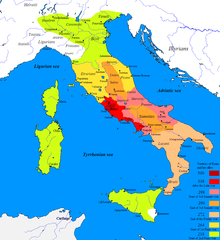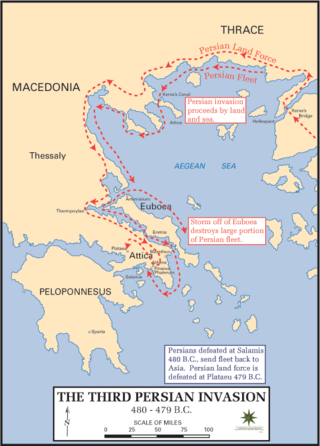This article needs additional citations for verification .(June 2022) |
| Millennium: | 1st millennium BC |
|---|---|
| Centuries: | |
| Decades: | |
| Years: |
| 338 BC by topic |
| Politics |
|---|
| Categories |
| Gregorian calendar | 338 BC CCCXXXVII BC |
| Ab urbe condita | 416 |
| Ancient Egypt era | XXXI dynasty, 6 |
| - Pharaoh | Arses of Persia, 1 |
| Ancient Greek era | 110th Olympiad, year 3 |
| Assyrian calendar | 4413 |
| Balinese saka calendar | N/A |
| Bengali calendar | −930 |
| Berber calendar | 613 |
| Buddhist calendar | 207 |
| Burmese calendar | −975 |
| Byzantine calendar | 5171–5172 |
| Chinese calendar | 壬午年 (Water Horse) 2359 or 2299 — to — 癸未年 (Water Goat) 2360 or 2300 |
| Coptic calendar | −621 – −620 |
| Discordian calendar | 829 |
| Ethiopian calendar | −345 – −344 |
| Hebrew calendar | 3423–3424 |
| Hindu calendars | |
| - Vikram Samvat | −281 – −280 |
| - Shaka Samvat | N/A |
| - Kali Yuga | 2763–2764 |
| Holocene calendar | 9663 |
| Iranian calendar | 959 BP – 958 BP |
| Islamic calendar | 988 BH – 987 BH |
| Javanese calendar | N/A |
| Julian calendar | N/A |
| Korean calendar | 1996 |
| Minguo calendar | 2249 before ROC 民前2249年 |
| Nanakshahi calendar | −1805 |
| Thai solar calendar | 205–206 |
| Tibetan calendar | 阳水马年 (male Water-Horse) −211 or −592 or −1364 — to — 阴水羊年 (female Water-Goat) −210 or −591 or −1363 |


Year 338 BC was a year of the pre-Julian Roman calendar. At the time it was known as the Year of the Consulship of Camillus and Maenius (or, less frequently, year 416 Ab urbe condita ). The denomination 338 BC for this year has been used since the early medieval period, when the Anno Domini calendar era became the prevalent method in Europe for naming years.




